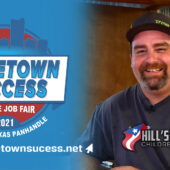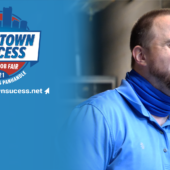Correctional Officers, Jailers, and Bailiffs
Phillip | March 2, 2021
704 Views
1 Like
5
On 1 Rating
Related
Correctional Officers, Jailers, and Bailiffs
Police Officer Information
| Quick Facts: Correctional Officers and Bailiffs | |
|---|---|
| 2019 Median Pay | $45,300 per year $21.78 per hour |
| Typical Entry-Level Education | High school diploma or equivalent |
| Work Experience in a Related Occupation | None |
| On-the-job Training | Moderate-term on-the-job training |
| Number of Jobs, 2019 | 462,300 |
| Job Outlook, 2019-29 | -7% (Decline) |
| Employment Change, 2019-29 | -33,100 |
Correctional officers oversee those who have been arrested and are awaiting trial or who have been sentenced to serve time in jail or prison. Bailiffs are law enforcement officers who maintain safety and order in courtrooms.

Correctional officers are responsible for overseeing individuals who have been arrested and are awaiting trial or who have been sentenced to serve time in jail or prison. Bailiffs, also known as marshals or court officers, are law enforcement officers who maintain safety and order in courtrooms. Their duties, which vary by court, include enforcing courtroom rules, assisting judges, guarding juries, delivering court documents, and providing general security for courthouses.
Duties
Correctional officers typically do the following:
- Enforce rules and keep order within jails or prisons
- Supervise activities of inmates
- Inspect facilities to ensure that they meet security and safety standards
- Search inmates for contraband items
- Report on inmate conduct
- Escort and transport inmates
Bailiffs typically do the following:
- Ensure the security of the courtroom
- Enforce courtroom rules
- Follow court procedures
- Escort judges, jurors, witnesses, and prisoners
- Handle evidence and court documents
Inside the prison or jail, correctional officers enforce rules and regulations. They maintain security by preventing disturbances, assaults, and escapes, and by inspecting facilities. They check cells and other areas for unsanitary conditions, contraband, signs of a security breach (such as tampering with window bars and doors), and other rule violations. Officers also inspect mail and visitors for prohibited items. They write reports and fill out daily logs detailing inmate behavior and anything else of note that occurred during their shift.
Correctional officers may have to restrain inmates in handcuffs and leg irons to escort them safely to and from cells and to see authorized visitors. Officers also escort prisoners to courtrooms, medical facilities, and other destinations.
Bailiffs’ specific duties vary by court, but their primary duty is to maintain order and security in courts of law. They enforce courtroom procedures that protect the integrity of the legal process. For example, they ensure that attorneys and witnesses do not influence juries outside of the courtroom, and they also may isolate juries from the public in some circumstances. As a neutral party, they may handle evidence during court hearings to ensure that only permitted evidence is displayed.

Bailiffs held about 20,300 jobs in 2019. The largest employers of bailiffs were as follows:
| Local government, excluding education and hospitals | 72% |
| State government, excluding education and hospitals | 27 |
Correctional officers and jailers held about 442,000 jobs in 2019. The largest employers of correctional officers and jailers were as follows:
| State government, excluding education and hospitals | 53% |
| Local government, excluding education and hospitals | 37 |
| Facilities support services | 5 |
| Federal government | 4 |
Correctional officers may work indoors or outdoors, and bailiffs generally work in courtrooms. They both may be required to stand for long periods.
Injuries and Illnesses
Working in a correctional institution can be stressful and dangerous. Correctional officers and jailers may become injured in confrontations with inmates, and they have one of the highest rates of injuries and illnesses of all occupations.
The job demands that officers be alert and ready to react throughout their entire shift.
Work Schedules
Correctional officers usually work full time on rotating shifts. Because jail and prison security must be provided around the clock, officers work all hours of the day and night, including weekends and holidays. Many officers are required to work overtime. Bailiffs’ hours are determined by when court is in session.

Correctional officers and bailiffs typically attend a training academy. Although qualifications vary by state and agency, all agencies require a high school diploma. Federal agencies may also require some college education or previous work experience.
Many agencies establish a minimum age for correctional officers, which is typically between 18 and 21 years of age.
Education
Correctional officers and bailiffs must have at least a high school diploma or equivalent.
For employment in federal prisons, the Federal Bureau of Prisons requires entry-level correctional officers to have at least a bachelor’s degree or 1 to 3 years of full-time experience in a field providing counseling, assistance, or supervision to individuals.
Training
Correctional officers and bailiffs complete training at an academy. Training typically lasts several months, but this varies by state. The International Association of Directors of Law Enforcement Standards and Training maintains links to states’ Peace Officer Standards and Training (POST) programs. Academy trainees receive instruction in a number of subjects, including self-defense, institutional policies, regulations, operations, and security procedures.
Important Qualities
Decisionmaking skills. Correctional officers and bailiffs must use both their training and common sense to quickly determine the best course of action and to take the necessary steps to achieve a desired outcome.
Detail oriented. Correctional officers and bailiffs follow and enforce strict procedures in correctional facilities and courts to ensure everyone’s safety.
Interpersonal skills. Correctional officers and bailiffs must be able to interact and communicate effectively with inmates and others to maintain order in correctional facilities and courtrooms.
Negotiating skills. Correctional officers must be able to assist others in resolving differences in order to avoid conflict.
Physical strength. Correctional officers and bailiffs must have the strength to physically subdue inmates or others.
Self-discipline. Correctional officers must control their emotions when confronted with hostile situations.
The median annual wage for bailiffs was $47,830 in May 2019. The median wage is the wage at which half the workers in an occupation earned more than that amount and half earned less. The lowest 10 percent earned less than $24,620, and the highest 10 percent earned more than $82,900.
The median annual wage for correctional officers and jailers was $45,180 in May 2019. The lowest 10 percent earned less than $31,740, and the highest 10 percent earned more than $78,090.
In May 2019, the median annual wages for bailiffs in the top industries in which they worked were as follows:
| State government, excluding education and hospitals | $69,130 |
| Local government, excluding education and hospitals | 42,610 |
In May 2019, the median annual wages for correctional officers and jailers in the top industries in which they worked were as follows:
| Federal government | $58,020 |
| Local government, excluding education and hospitals | 46,020 |
| State government, excluding education and hospitals | 44,090 |
| Facilities support services | 39,410 |
Correctional officers usually work full time on rotating shifts. Because jail and prison security must be provided around the clock, officers work all hours of the day and night, including weekends and holidays. Many officers are required to work overtime. Bailiffs’ hours are determined by when court is in session.
Employment of correctional officers and bailiffs is projected to decline 7 percent from 2019 to 2029. State and local budget constraints and prison population levels will determine how many correctional officers are necessary.
Although correctional officers will continue to be needed to watch over the U.S. prison population, changes to criminal laws can have a large effect on how many people are arrested and incarcerated each year.
Faced with high costs for keeping people in prison, many state governments have moved toward laws requiring shorter prison terms and alternatives to prison. While keeping the public safe, community-based programs designed to rehabilitate prisoners and limit their risk of repeated offenses may also reduce prisoner counts.
Bailiffs will continue to be needed to keep order in courtrooms.
Job Prospects
Despite the projected decline in employment, job prospects should still be good due to the need to replace correctional officers who transfer to other occupations or leave the labor force, such as to retire.
| Occupational Title | SOC Code | Employment, 2019 | Projected Employment, 2029 | Change, 2019-29 | Employment by Industry | ||
|---|---|---|---|---|---|---|---|
| Percent | Numeric | ||||||
|
SOURCE: U.S. Bureau of Labor Statistics, Employment Projections program |
|||||||
| Bailiffs, correctional officers, and jailers | 33-3010 | 462,300 | 429,200 | -7 | -33,100 | Get data | |
|
Bailiffs |
33-3011 | 20,300 | 20,300 | 0 | -100 | Get data | |
|
Correctional officers and jailers |
33-3012 | 442,000 | 408,900 | -7 | -33,100 | Get data | |
Bureau of Labor Statistics, U.S. Department of Labor, Occupational Outlook Handbook, Correctional Officers and Bailiffs,
at https://www.bls.gov/ooh/protective-service/correctional-officers.htm
Tagged as Childress County, Childress County Sheriff's Office, Childress Jail, Cop, Jail, Jailer, Law Enforcement, Police, Police Academy, Police Officer, Protective Service Occupations, Sheriff.
Written by Phillip



















